Unlike most venerable Swiss watch brands, which tout the importance of history and tradition, Hublot is a modern upstart, founded in 1980. LVMH acquired the brand in 2004 and installed industry turnaround artist Jean-Claude Biver at its helm. Now president of the LVMH Watch Division and chairman of Hublot, Biver embraced Hublot’s contemporary essence and amped it up with big, bold designs using avant-garde materials at stratospheric prices.
Hublot Factory Tour
The pride of LVMH's watchmaking division melds forward-thinking watchmaking with age-old traditions at its state-of-the-art Swiss manufacture.
By Laurie Kahle September 13, 2017
Realizing he could never convert older, conservative enthusiasts who would stay loyal to established marques, he pursued a new generation that is more open to an unconventional alternative. To build that following, he turned to the internet and social media. Big-money sports sponsorships, such as 2014’s FIFA World Cup, and partnerships with champion athletes such as Usain Bolt, plus the coup of clinching a deal with Ferrari raised the once-obscure brand’s profile considerably. According to LVMH’s 2016 financial report, last year was its most successful ever.
Hublot’s headquarters in Nyon, Switzerland, opened in 2009. Only six years later it was expanded with a second building across nearby railroad tracks, doubling its production capacity. A sleek Formula One–style bridge that arches over the tracks links the H1 and H2 buildings.
Like most premium brands, Hublot leverages cutting-edge technology, including automated electro-spark and CNC milling machines for producing componentry, while centuries-old crafts like finishing and assembly are still performed the old-fashioned way, by hand.
“Hublot can be defined by disruptive, unaccessible luxury,” says Biver. “That’s Hublot! It’s unaccessible because the price is completely crazy. Then, not only is it a crazy price, but the watch is crazy in itself in the way it’s disruptive—it’s not what you would expect.”
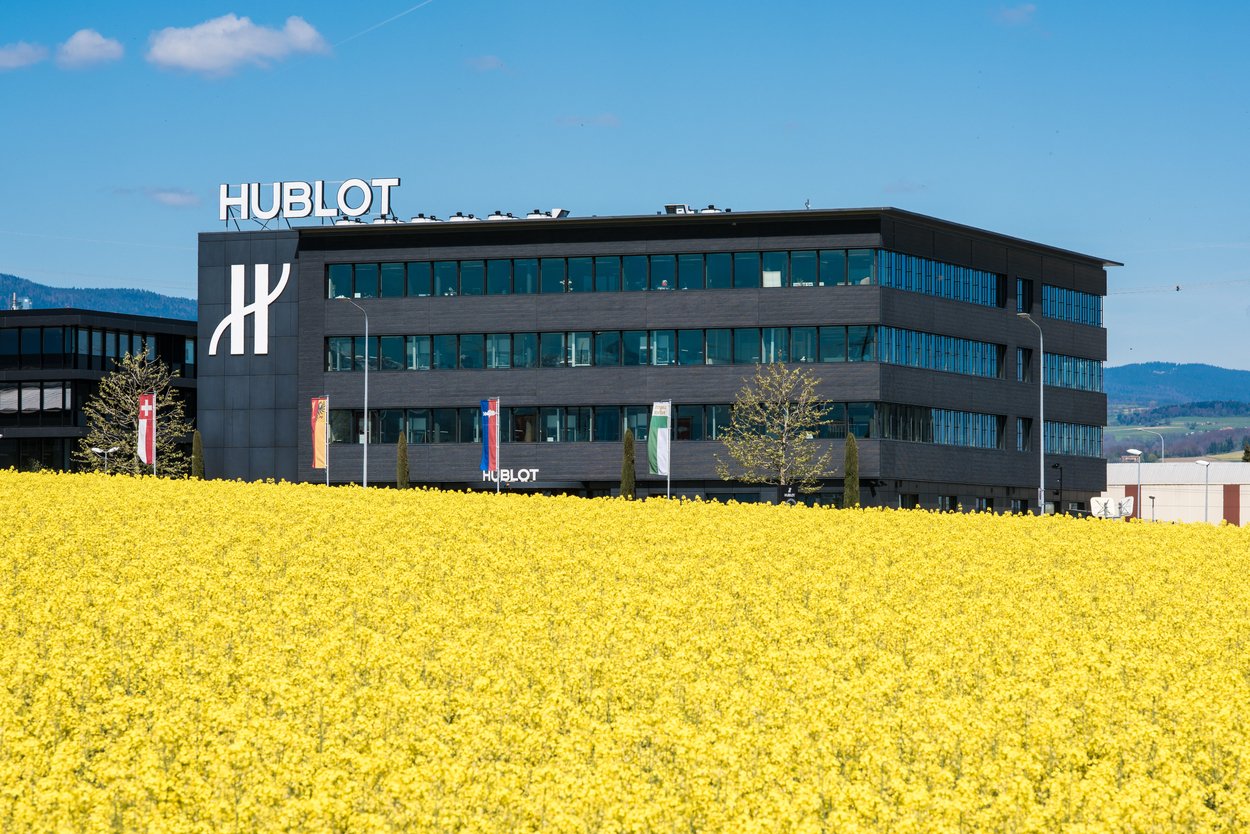
Located about 15 miles outside of Geneva, Hublot’s Nyon headquarters consists of two modern buildings separated by a railroad track and connected by a Formula One–style bridge.
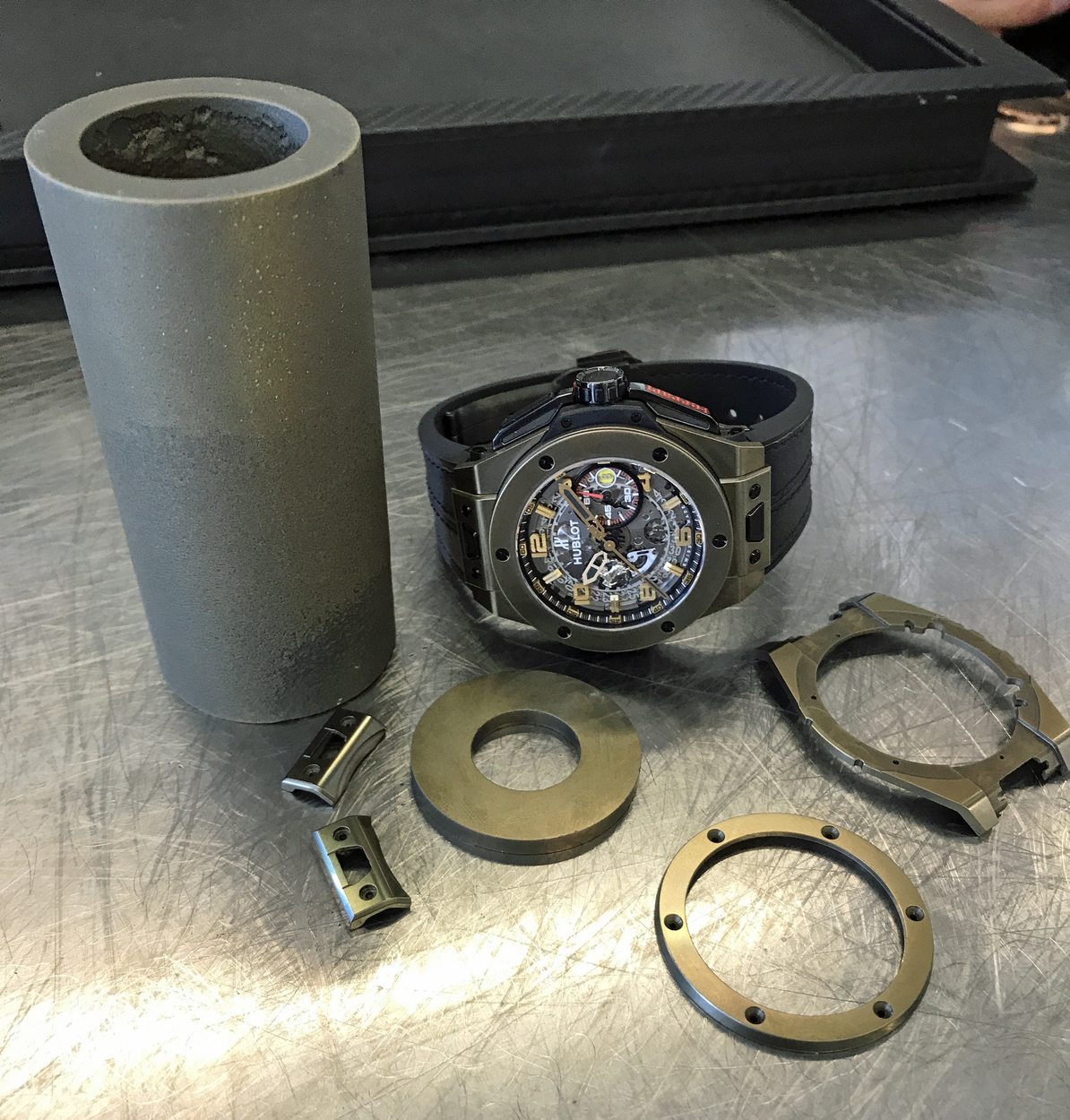
A Big Bang Ferrari with bezel and case made of scratch-proof Magic Gold, which is so hard it requires the use of a special diamond milling machine. The process is so slow, only one case per day on average is produced.
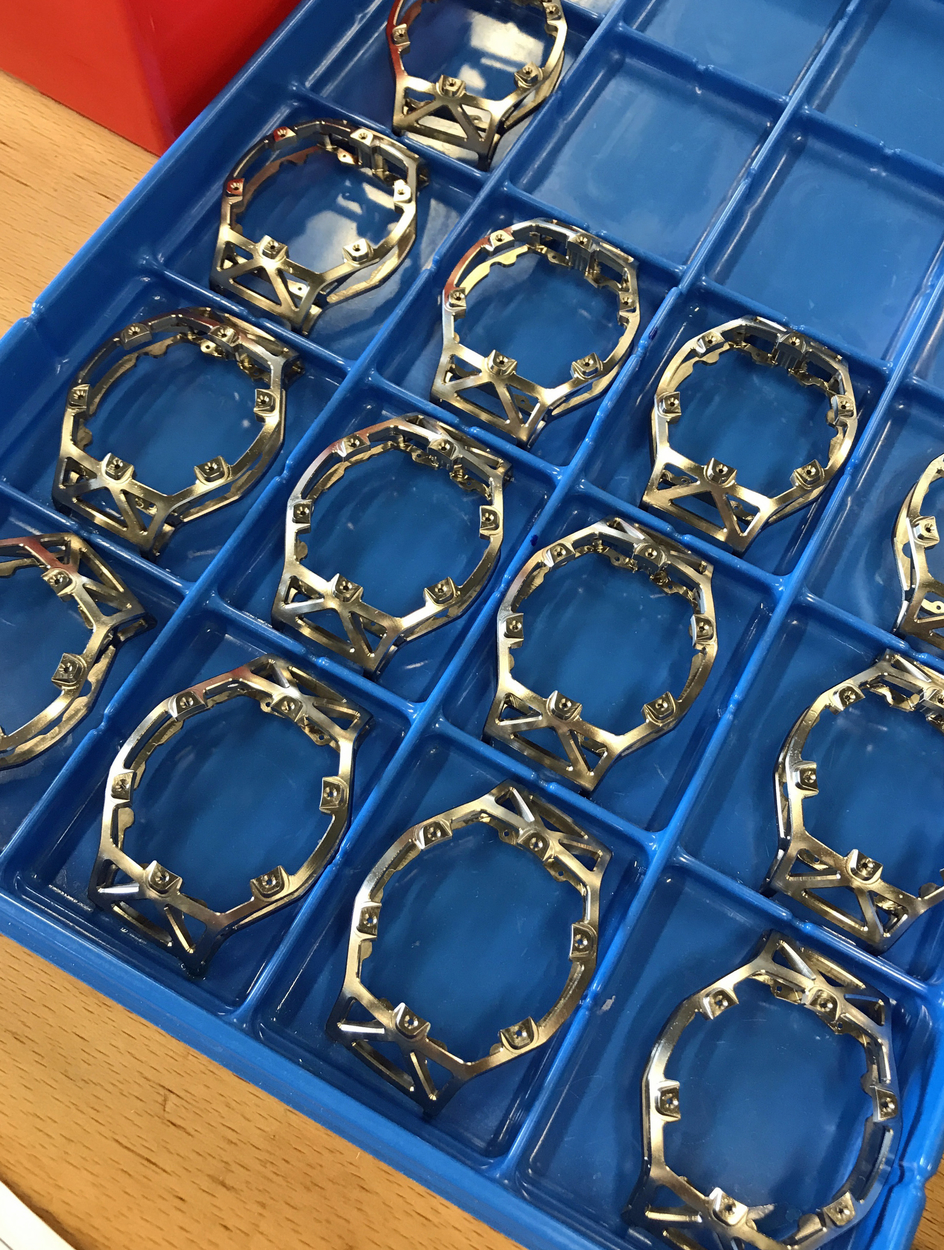
King Gold cases for the new limited-edition Techframe Ferrari 70 Years Tourbillon Chronograph designed by Ferrari to mark the automotive marque’s 70th anniversary.
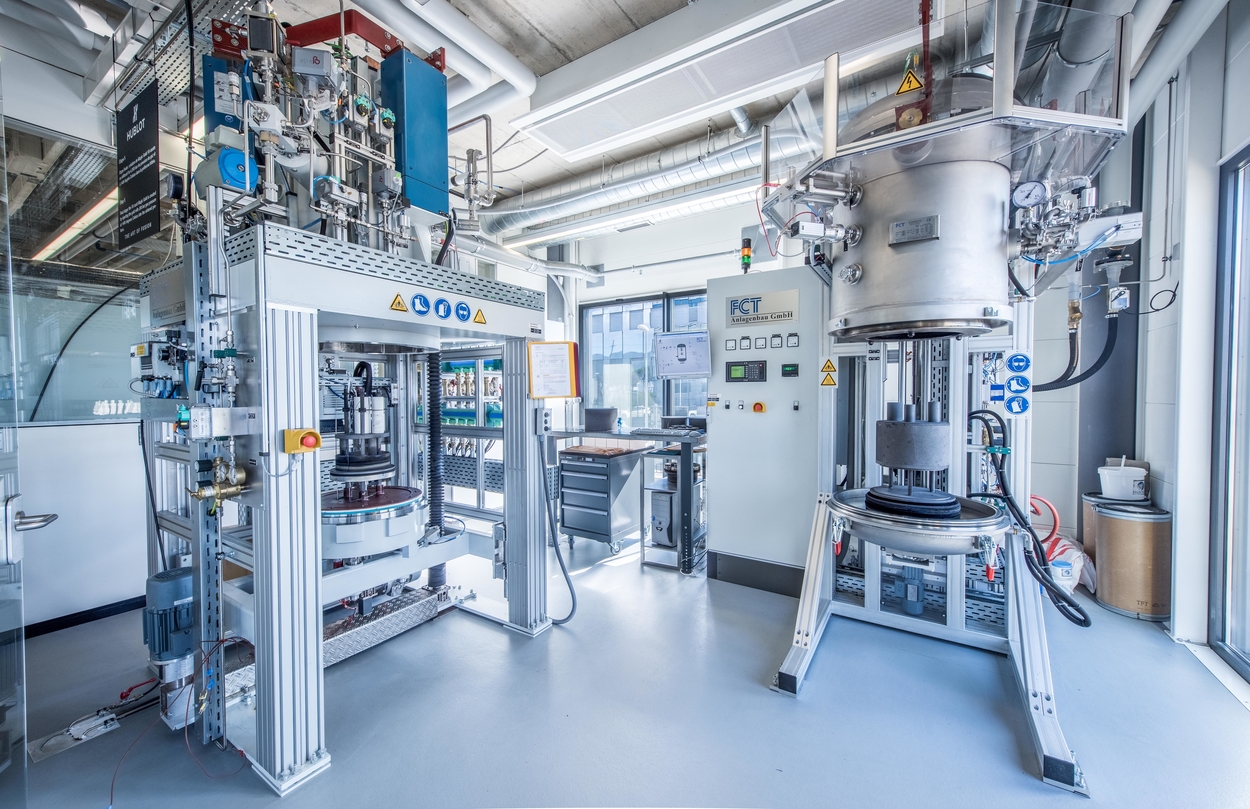
The foundry where 18k Magic Gold is created by fusing boron carbide (ceramic) and 24k gold using a proprietary process that applies high pressure and heat to bond the materials in a super-tough alloy.
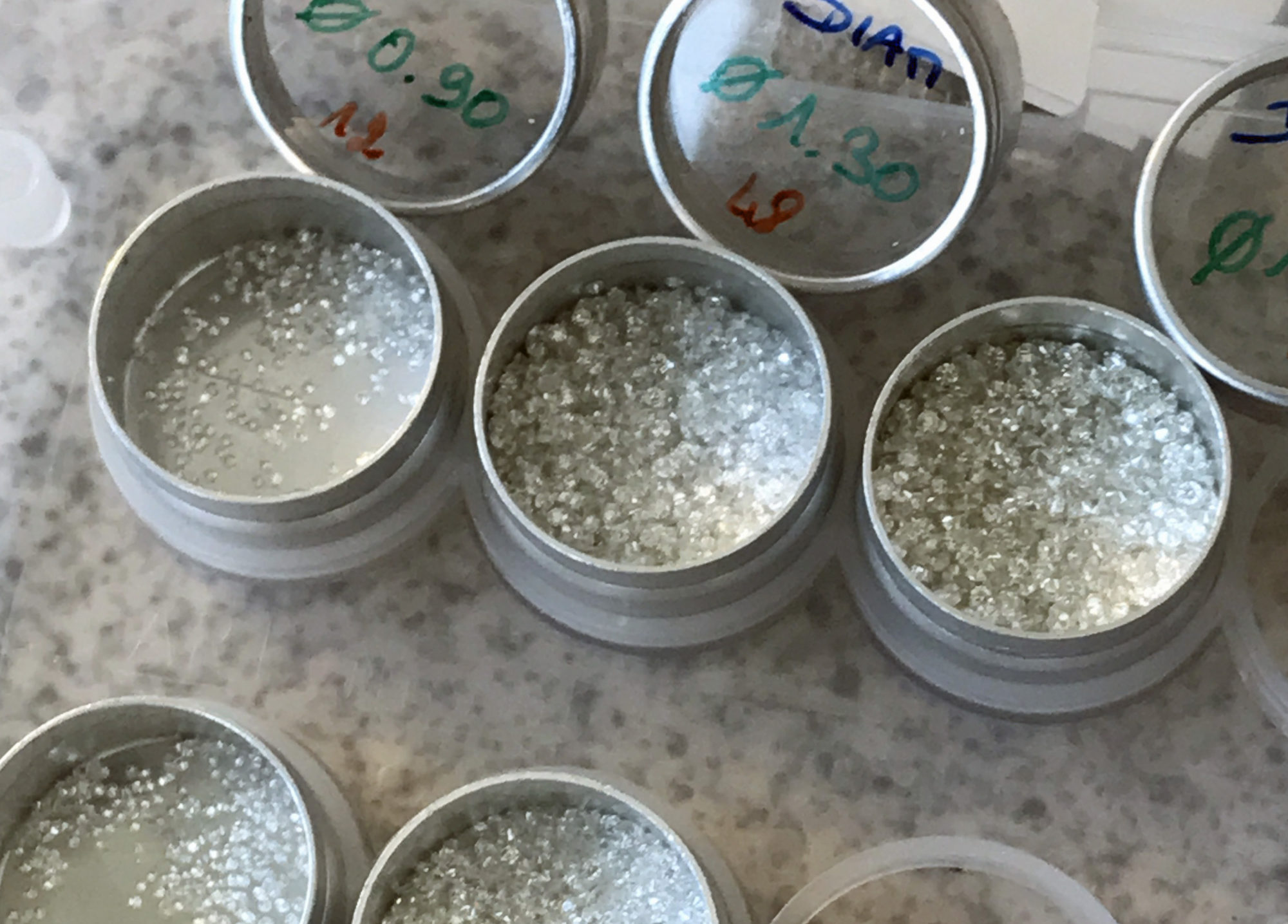
In the Sertissage (stone setting) workshop, gem-setters decorate cases, dials, and components with sparkling diamonds and other jewels.
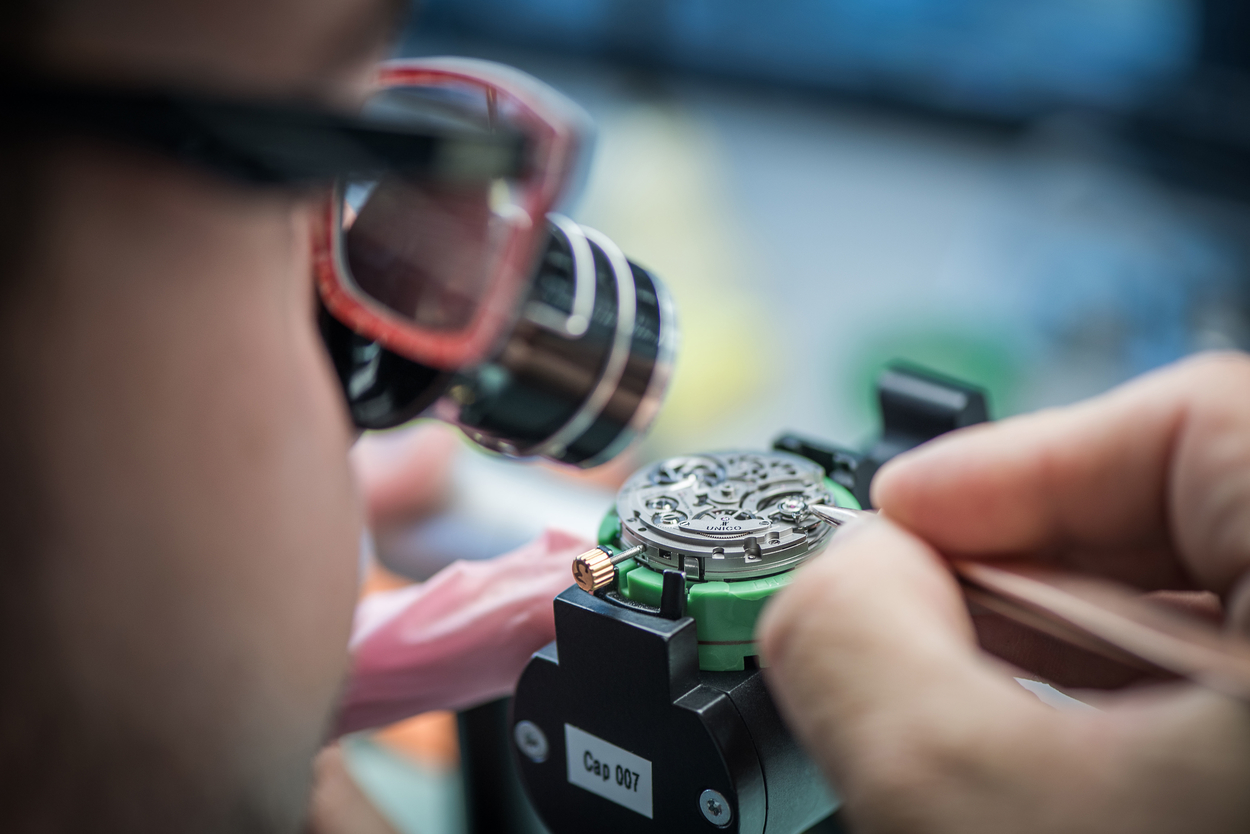
In the UNICO workshop, watchmakers assemble movements following a linear process that assigns each watchmaker a different task, though all are trained in every step so that they can interchange functions.

Once the movement passes accuracy tests, it moves to the Assembly workshop, where dial and hands are affixed and the movement is inserted into the case. Components are produced in the H2 building using state-of-the-art CNC and electro-spark machinery.
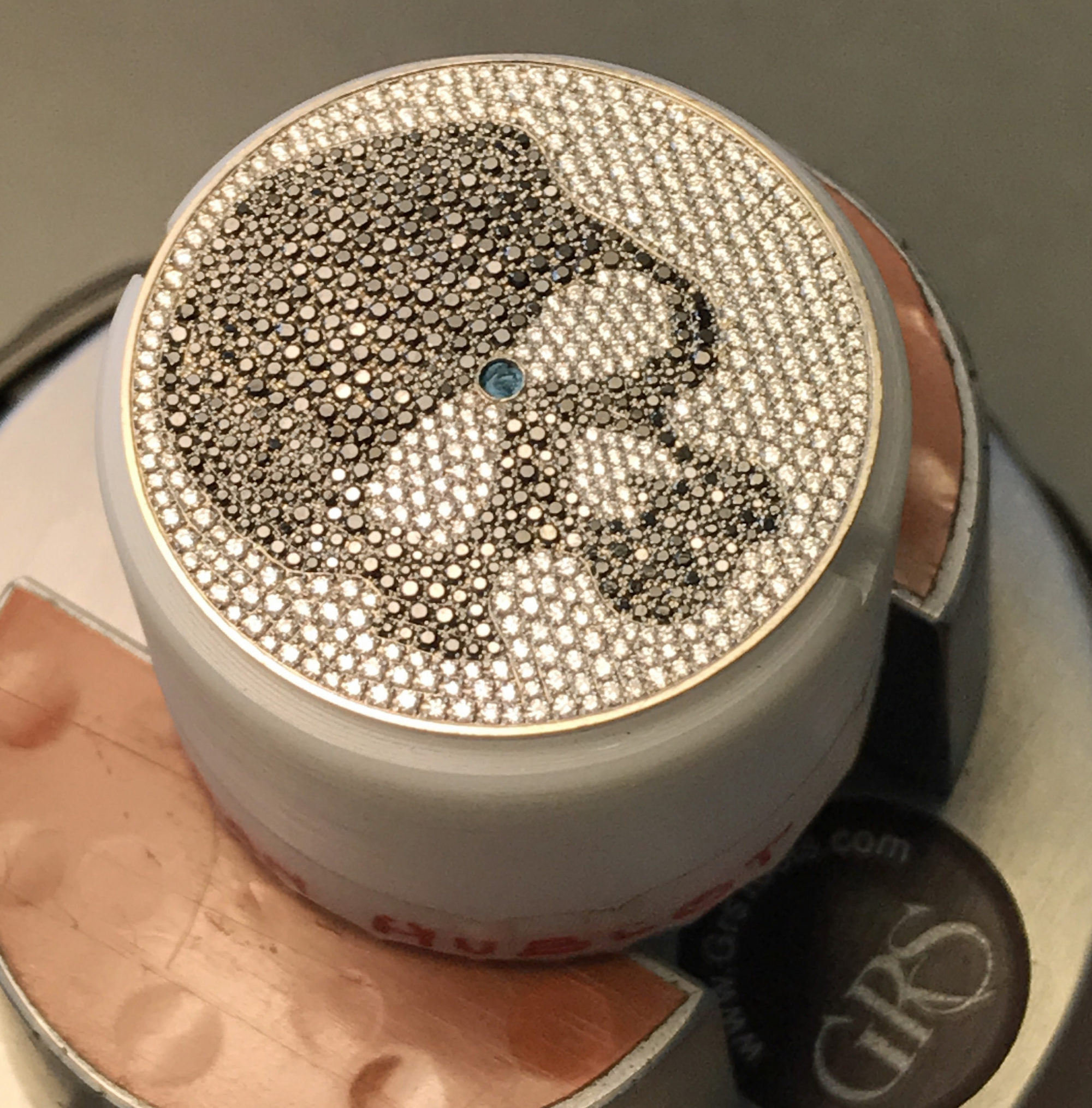
A full pavé dial for a Classic Fusion Skull watch depicts a skull with 824 black and white diamonds totaling more than two carats.